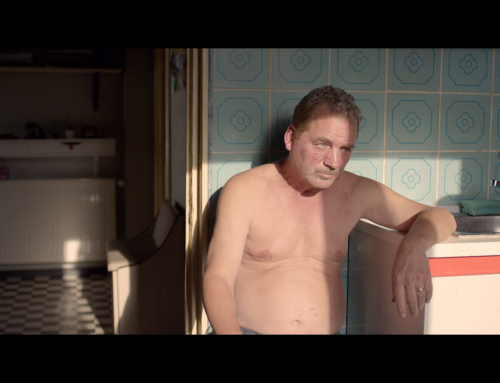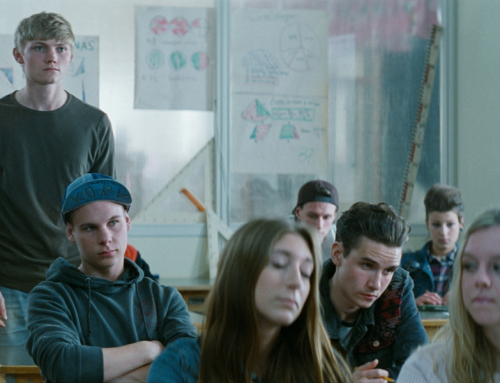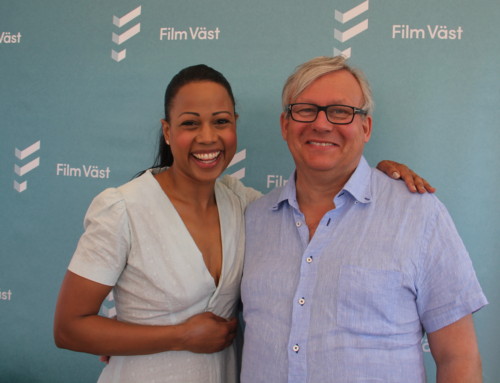CINEUROPA | Swedish director Sanna Lenken showcased her first feature, My Skinny Sister, at the Lecce European Film Festival, where she won Best Screenplay, the Fipresci Award and the Audience Award.
Having already won awards at the Göteborg Festival and at the Berlinale in 2015, My Skinny Sister Cineuropa: From the short film to the feature film, how did your portrayal of anorexia change? So the protagonists of the short film aren’t the same as those of the feature film? Why did you choose the topic of anorexia for your debut feature film? Stella is the first one to realise that Katja is sick. Where did the idea to use the perspective of the little sister come from? The two lead actresses work in perfect harmony with each other. How did you find them? Directing a little girl in such a dramatic role can’t be easy. How was it working with Rebecka/Stella? When will we be able to see My Skinny Sister in theatres? Vittoria Scarpa
Sanna Lenken: I started writing the feature film six years ago, before making the short film Eating Lunch. Whilst doing research for the film I came across lots of personal stories. One girl in particular told me about her experience of a clinic for eating disorders, and it seemed that therein lay the perfect subject matter for a short film. I knew I didn’t have a moment to lose (I had also fallen pregnant), I wanted to tell that story, so first I made the short film. It ended up being a good idea because the short film helped us secure funding for the feature film, was screened at forty or so international film festivals, winning a number of awards, and was shown in schools. The short film and the feature film show two different sides of the illness, but are closely linked.
No, in Eating Lunch the protagonists are teenage girls in a clinic for eating disorders, at lunchtime. They have thirty minutes to eat (that’s how ot works), but nobody wants to, they all look at each other and nobody dares take the first bite. The feature film shows another perspective: that of the little sister of the person who’s sick.
I myself suffered with anorexia as a teenager. I needed to tell a story about this because I haven’t seen many that do. I also wanted to show what it’s like to be a little girl bearing such a heavy burden, having to deal with the confusion created by the need to look and be a certain way. The film broaches a number of issues, not just anorexia, such as how society deals with this phenomenon, which is on the rise in Sweden. I met a lot of talented, beautiful girls who are sick, and I had to make this film. In the film itself there’s an entire family, two sisters in particular, who have to face this illness. The girl is ill with anorexia, but everyone falls victim to it as a result.
I also have a little sister. Originally, while I was writing the story, the film was going to be from the perspective of the girl who’s ill. Then I thought back to how my sister reacted, how scared she was that I would die. She was actually more worried that I was mentally ill than by the fact that I wouldn’t eat, as eating disorders do lead you to lose your mind somewhat. You become manipulative, you have hysterical fits. Using Stella’s perspective makes the story more universally accessible.
I looked for them for a year, I saw hundreds of girls. It wasn’t easy because they had to fight, cry and love one another, and I had to watch them very closely. I found Katja first, or rather, Amy Deasismont, who is a children’s pop singer (she goes by the alias of Amy Diamond, ndr). My casting director pointed her out to me. I was sceptical, I didn’t think she was right for the part because she was known for always smiling and being happy. Then, at her audition, she surprised me by showing me another, more emotional side of her character. When it came to finding Stella, on the other hand, I was worried because it got to the point where if we didn’t find someone in two weeks, the film wouldn’t have gone forward. I was desperate, when a friend suggested Rebecka Josephson. I thought she was extraordinary, and she improved with every audition. Then I saw the two of them together, how they interacted with one another, both with red hair too… and I fell in love with them.
Her mother was worried that the role would be too draining on Rebecka, so we worked with her for no more than seven hours a day. I worked with the adults in the morning then she would arrive and we’d do her scenes, and even if she didn’t always know her lines, it went well because she’s a natural, she was confident because before filming we did a lot of improvisation work with the family. In the scenes where she has to cry, she managed to tap into the right emotions all by herself. Every now and again I’d ask if she was ok, and she’d say, “Sanna, it’s good to cry every once in a while”, like a grown-up! I think she also really loved Amy, and vice versa. When they were together they worked very well, they were in sync. In the scenes with the other children, on the other hand, I had to help her a bit more.
The film is due for release in Sweden in September. It has been bought in France, Germany, and almost all over Scandinavia, in a dozen or so European countries all in all. It’s also been bought in Asia, South Korea, Iran, Iraq and other Middle Eastern countries. I want adults to see the film with their children and reflect on the weight a teenager sometimes has to bear on their shoulders.






